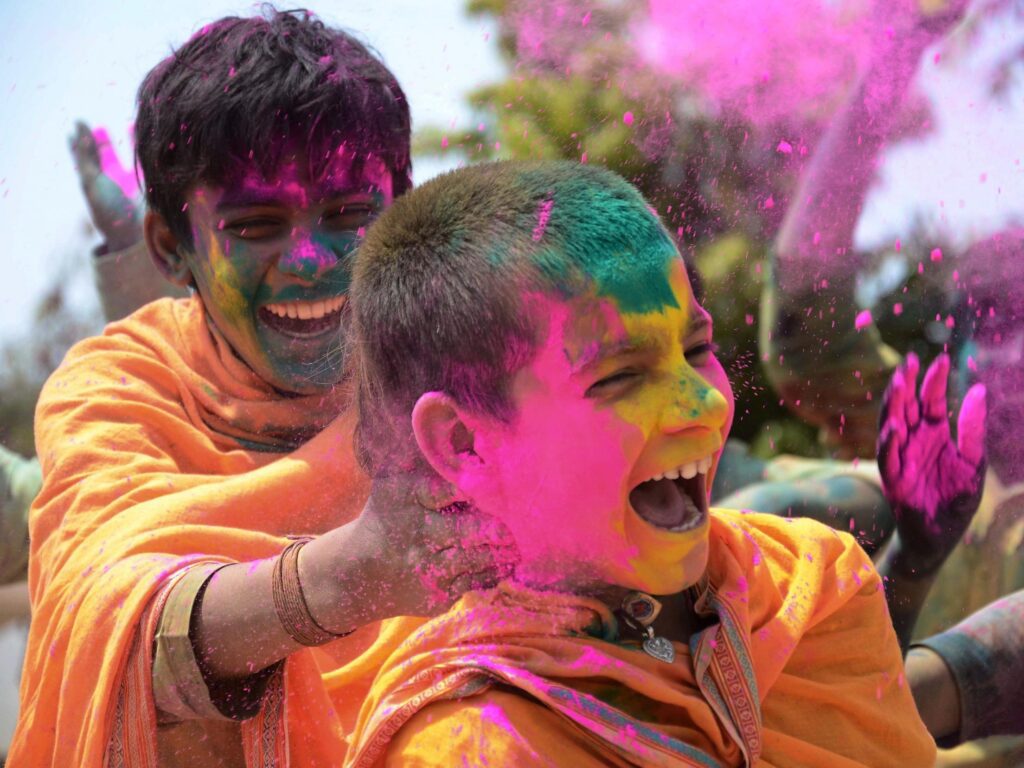Holi, also known as the Festival of Colors, is a joyous celebration in India that marks the arrival of spring and the victory of good over evil. This article explores the origins of Holi, its preparations, and the vibrant throwing of colors during the festival. Mathura and Vrindavan, known as the birthplace of Lord Krishna, host grand Holi celebrations with cultural performances and enactments. Participating in Holi is an immersive experience filled with playful water fights and the indulging of delicious sweets. The festival brings people together, fostering unity and togetherness, and leaving lasting memories.
The Color of India: Experiencing Holi Festival at its Origin
Introduction
India is a country famous for its rich cultural heritage, diverse traditions, and vibrant celebrations. One of the most iconic festivals celebrated in India is Holi, also known as the Festival of Colors. Originating from the northern regions of India, Holi is a joyous festival that marks the arrival of spring and the victory of good over evil. This article will take you on a journey to experience the Holi festival at its origin, exploring its traditions, rituals, and the mesmerizing display of colors.
Background
Holi has its roots in Hindu mythology and is associated with various legends. The most popular legend is the tale of Prahlada and Hiranyakashipu. According to the legend, Prahlada, a devoted follower of Lord Vishnu, was protected from the evil intentions of his father Hiranyakashipu, who wanted to kill his own son. Prahlada’s aunt, Holika, had a special power to be immune to fire. However, during an attempt to kill Prahlada, she was burned to ashes, while Prahlada remained unharmed. This symbolizes the victory of good over evil and the name “Holi” is derived from the word “Holika.”
Preparation for Holi
The preparations for Holi begin weeks in advance. People clean their houses and gather wood for a bonfire known as Holika Dahan, which is lit on the eve of Holi. This bonfire symbolizes the burning of evil and signifies the triumph of good. Communities come together to sing and dance around the bonfire, adding to the festive atmosphere.
The Colors of Holi
The main highlight of Holi is the playful throwing of vibrant colors. On the day of Holi, people gather in open spaces and drench each other in colored powders and water. The air is filled with laughter, music, and the joyous cries of “Holi Hai!” The colors used during Holi have traditional significance. They are made from natural ingredients such as turmeric, Neem, and various flowers, which have the added benefit of being good for the skin.
Celebrations at the Origin
Mathura and Vrindavan, located in the state of Uttar Pradesh, are considered the birthplace of Lord Krishna and are famous for their grand Holi celebrations. Thousands of devotees and tourists flock to these cities to experience the traditional Holi festivities. The celebrations in Mathura and Vrindavan go beyond just playing with colors. They include cultural performances, folk dances, and the enactment of episodes from Lord Krishna’s childhood, adding a spiritual dimension to the festivities.
Experiencing Holi
Participating in Holi celebrations is an immersive and sensory experience like no other. The streets are transformed into a riot of colors as people smear each other with gulal (colored powder) and throw water-filled balloons. Children and adults alike indulge in friendly water fights, creating an atmosphere of pure joy and enthusiasm.
Delicious Holi Delicacies
Holi is also a festival of indulging in delicious sweets and savory dishes. Traditional sweets like gujiya (a sweet dumpling), malpua (pancakes), and thandai (a milk-based drink with spices and dry fruits) are prepared and shared among family and friends. These mouthwatering delicacies add to the festive spirit and provide a culinary delight for the taste buds.
The Aftermath
Once the vibrant celebrations of Holi come to an end, the streets are colored with hues of red, blue, green, and yellow. The spirit of unity and togetherness lingers, and people embrace each other, wishing for a prosperous year ahead. The aftermath of Holi is a reminder of the power of celebration and the ability of colors to unite people from different backgrounds and cultures.
Conclusion
Experiencing the Holi festival at its origin in India is a journey filled with cultural immersion, joyous celebrations, and a visual spectacle of colors. It is a festival that transcends boundaries and brings people together in a harmonious celebration of life. Holi is not just a festival; it is an experience that will leave an indelible mark on your soul and a memory that will last a lifetime.
